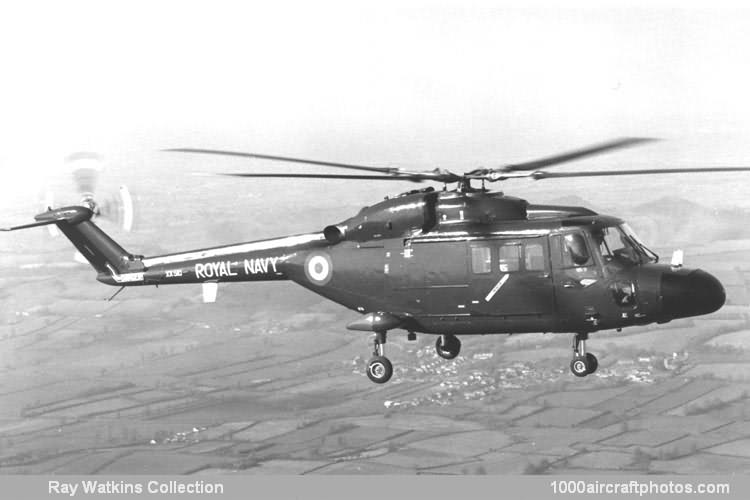10/31/2011. Remarks by Johan Visschedijk: "The Lynx was one of three types of aircraft (Puma, Gazelle and Lynx) covered by the Anglo-French helicopter agreement first proposed in February 1967 and confirmed on April 2, 1968. On December 1, 1972 a long-term agreement was signed between Westland Helicopters and Aerospatiale to formalize and strengthen the existing collaboration program. Westland had design leader-ship in the Lynx, which was a medium sized helicopter intended to fulfill general-purpose, naval and civil transport roles. It was the first British aircraft to be designed entirely on a metric basis.
Five basic aircraft, designated WG.13 Lynx, were being used by Westland to prove the fundamental design parameters. Following flight testing of two Scout helicopters fitted with scaled-down versions of the Lynx rotor system, the first Lynx prototype (XW835) flew for the first time on March 21, 1971 and was followed by XW837, the third prototype (second Lynx to fly), on September 28, 1971. Third to fly was the fourth Lynx (XW838, on March 9, 1972), the first to have the monobloc rotor head designed for production aircraft.
Then followed, on March 24, 1972, the first flight of the second aircraft (XW836), which had previously been used for ground vibration testing. The fifth Lynx to fly (XX153 on April 12, 1972) was a development aircraft for the British Army AH.Mk.1 version. In addition to these five aircraft, a sixth Lynx (XX907, first flight May 20, 1973) was allocated to Rolls-Royce for engine development. Other airframes have been built for static, fatigue and electrical testing.
On June 20 and 22, 1972 respectively, piloted by Roy Moxam, XX153 set up Class E1e international speed records of 199.92 mph (321.74 kmh) over a 9.3/15.5 mls (15/25 km) straight course and 197.909 mph (318.504 kmh) over a 62.1 (100 km) closed circuit. During the flight test program the Lynx rolled at more than 100° per second, dived at 230 mph (370 kmh), and flew backwards at 80 mph (130 kmh).
A further seven aircraft, also designated WG.13 Lynx, were being used for the main military development program. First of these to fly was XX469, first prototype for the Royal Navy HAS.Mk.2 version, which made its first flight on May 25, 1972. The second Royal Navy prototype, XX510, flew for the first time on March 6, 1973. The first French Navy prototype (XX904) made its first flight on July 6, 1973, and the second (XX911) on September 18, 1973. The last three prototypes were XX910 (common naval version, first flight April 23, 1974); XW839 (fifth basic aircraft, first flight June 19, 1974); and XZ166 (final Royal Navy prototype, first flight March 5 1975).
The Lynx HAS.Mk 2 was the version for Royal Navy, for advanced shipborne anti-submarine and other duties, fitted with Ferranti Seaspray search and tracking radar in modified nose. Capable of operation on anti-submarine classification and strike, air to surface vessel search and strike, search and rescue, reconnaissance, troop transport, fire support, communication and fleet liaison, and vertical replenishment duties. Two development aircraft (XX469 and XX510) originally, of which the former carried out deck landing trials at RAE Bedford and, on August 4, 1972, on board the French destroyer Tourville in harbor. Sea trials on board the helicopter support ship RFA Engadine, by XX510, began on June 29, 1973."
